Taking care of a yucca plant can be tricky. If your yucca is not thriving the way it used to, or you've noticed a change in its appearance, you may be wondering if it's dying. We've done the research and can tell you all of the signs that your yucca plant may be dying and what you can do to revive it.
Some signs that your yucca plant may be dying and needs some attention include:
- Yellowing leaves: indicating overwatering or lacking sunlight
- Soft trunk: signaling overwatering
- Brown leaves: indicating a lack of sunlight or too much fluoride
- Dark spots or tips on leaves: areas of fungus that need removal or additional ventilation/drying
- Limp leaves: indicating either over or underwatering or lacking sunlight
- Root rot: a sign of overwatering, needing to trim away rot and potentially repot the plant
Once you understand what yucca plants need to thrive, you'll be able to give yours what it needs. Read on to learn what causes these signs and how you can correct them, as well as when it may be too late.
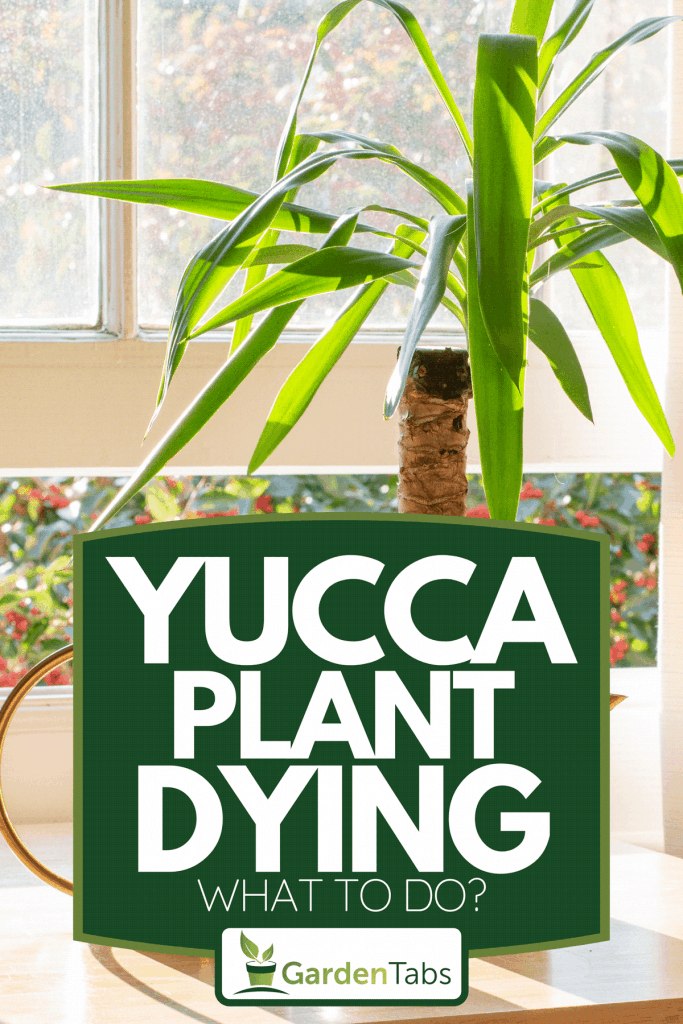
Why Are The Leaves On My Yucca Plant Turning Yellow?
Yucca plants are members of the Agave family. They evolved to thrive in dry, hot weather. Overwatering is more likely to kill a yucca plant than underwatering it. One sign of overwatering is yellowing leaves. Make sure your yucca dries out completely between waterings. It's important that the soil your yucca is planted in is well-draining as well.
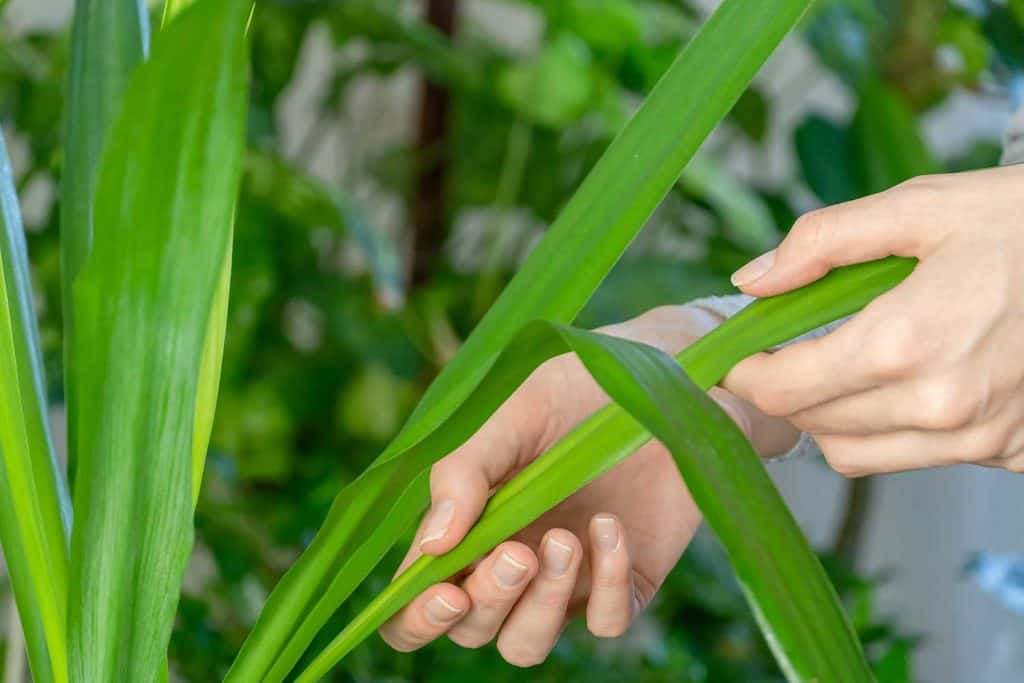
Another reason your yucca's leaves might turn yellow is if it's not getting enough sunlight. Yucca plants will do best if they get a lot of direct sunlight. If your yucca is indoors, you may need to move it to a south-facing window so it can get more direct light. If your yucca is outdoors, you may have to cut back any other plants that are shading it or move it out of a shady area.
Finally, the leaves on your Yucca may be turning yellow because of age. In nature, the bottom leaves of an aging yucca plant will fall, forming a skirt around the plant. If your plant is indoors or you simply don't care for the look of the yellow leaves, you can pull or cut them off.
Click here to order Adams Needle Yucca seeds on Amazon.
Why Does My Yucca Plant Have a Soft Trunk?
A soft trunk is a sign that your yucca plant is being overwatered. Yucca trunks hold water for the plant, but if it sits in water too long, the trunk will start to rot. Once the trunk is soft, you may need to cut part of it off.
If root rot has taken hold of your yucca, you need to cut off the parts of the root and trunk that are rotten. Repot the root with any good roots still attached. Make sure you use dry, well-draining soil. Choose a smaller pot since it will dry out more quickly. Give your yucca a chance to recover before you water it again.
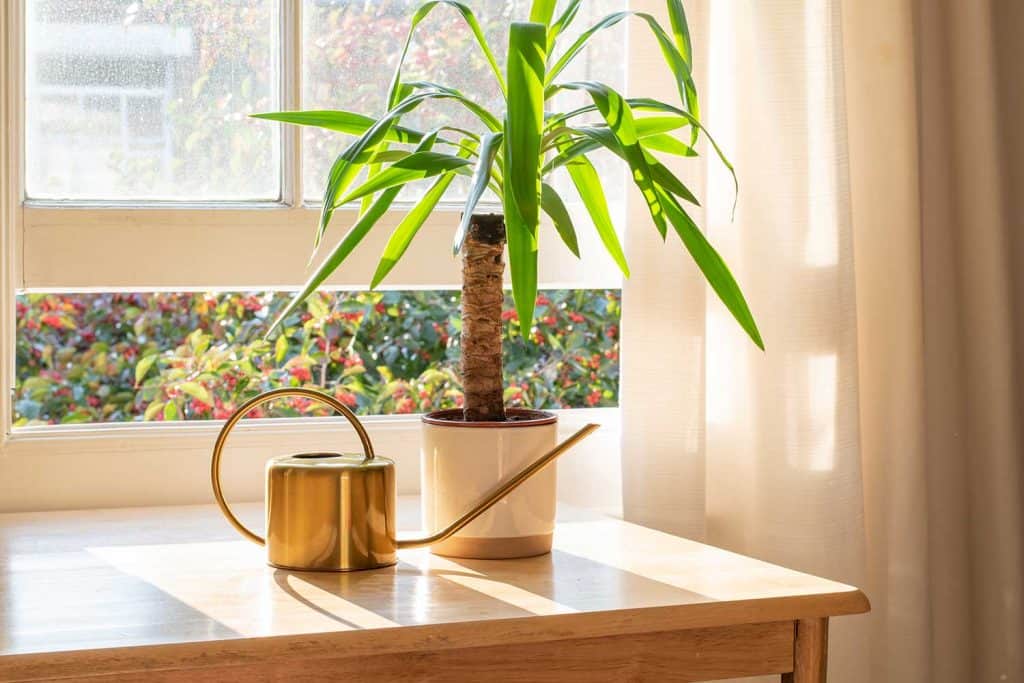
Why Are The Leaves On My Yucca Plant Turning Brown?
While it's normal for the bottom leaves of a yucca plant to turn brown, if the leaves in the main part of the plant turn brown, there's likely a problem. This is because your yucca may not be getting enough light. When yuccas don't get enough light, their leaves will initially turn a darker green, then yellow, then fade to brown.
If the leaves on your yucca are only brown on the tips, it could mean your yucca is getting too much fluoride. Switching to watering with distilled water should clear this up, though it may take a while. This can be an unsightly problem, but it won't affect the health of your yucca plant.
Why Do My Yucca Leaves Have Dark Spots?
Brown spots on your yucca plant could indicate fungal spots. Remove the affected leaves and make sure your plant is getting enough ventilation. If fungal leaf spots are a problem, don't splash water on your yucca's leaves when you water the plant. Water at the base of the plant's base.
Yuccas don't do well in very humid environments, so try to keep your yucca in an area that's dry. Don't crowd your ycca if your air is at all moist. Instead, make sure there's room for air to circulate around it.
Click here to shop for grow lights on Amazon.
Why Are My Yucca Leaves Limp?
Yuccas are normally strong, sturdy plants. When the leaves on a yucca become limp, it's usually a problem with how much water or sunlight it's getting. While yuccas can't tolerate overwatering, they also can't tolerate underwatering.
Water your yucca plant when the top two inches of soil are dry. During the summer, it will need about an inch of water weekly. During the winter, it may only need an inch of water every other week. If you're going longer than two weeks between waterings, your yucca may not be getting enough.
The leaves of your yucca may also be limp if they aren't getting enough sunlight. As with yellow or brown leaves, limp leaves can indicate your plant needs more light. You might want to get a grow light for your indoor yucca if you can't place it in full sunlight.
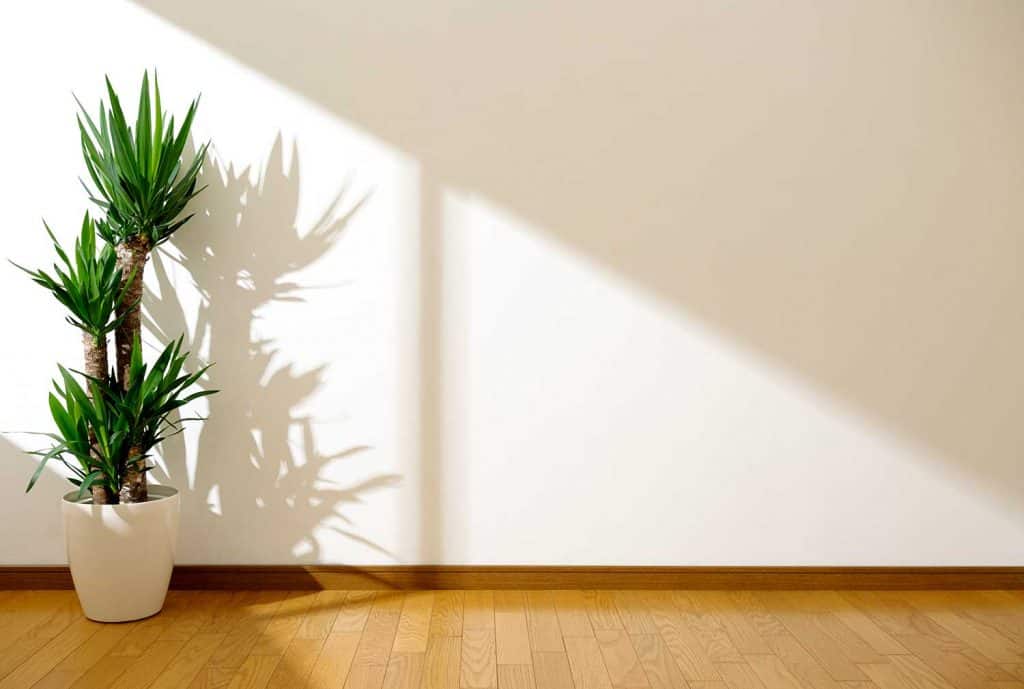
What Does Yucca Root Rot Look Like?
A yucca plant with root rot will often have a soft trunk, leaves that wilt, turn black, and then fall off, and drooping branches. Ironically, a yucca with root rot from overwatering looks like a yucca dying from not getting enough water.
You can confirm that your yucca has root rot by removing it from its pot. Yucca roots should be light in color. Any roots that are dark in color or mushy are rotten and will have to be cut away. If most of the roots are rotted, you probably won't be able to save the plant.
Click here to check out plant trimmers on Amazon.
A yucca with most of the roots intact, however, may be salvageable. You'll need to trim away any areas of rot. Sanitize your trimmers after each cut to prevent spreading the root rot. You can use a 10% bleach solution for this. Start with the roots and cut slightly above any damaged areas.
As you work, discard the rotten pieces of your yucca, making sure to keep them away from the healthy part of the plant. Once you have the roots trimmed, cut away any rotten sections of the trunk and discard any leaves that show signs of deterioration or rot.
When you're ready to replant your yucca, either sanitize the pot or use a new one. Choose a pot that is small for the size of your yucca. An oversized pot will only contribute to your yucca standing in wet soil. After repotting, let the yucca sit for a few days before you water it again.

Should I Cut Dead Leaves Off My Yucca Plant?
In the wild, dead leaves on a yucca plant naturally fall around the bottom of the plant. These leaves are harmless, and it's up to you if you want to cut them off. For outdoor plants, these leaves can act as a mulch around the plant. Indoor plants usually look cleaner if you cut the dead leaves off.
If the leaves of your yucca were damaged by fundal leaf rot, you should definitely cut them off. In general, if they were damaged by a disease or pest that can spread to the rest of the plant, you should cut them off. If it's just a cosmetic issue, you may decide it looks better to have some dead leaves instead of empty spaces on your plant.
When Should I Repot My Yucca Plant?
Yucca plants are slow-growing and won't have to be repotted often. They also do better with smaller pots. When your yucca plant has roots growing out of the drainage hole in its pot or the roots are matted on top of the soil, it's time to repot it.
When you do repot it, don't make a drastic jump in size. Choose a pot that's slightly larger than the one it's in now. Fill the pot about half full with the same soil mix if possible. Loosen the roots of the yucca with your fingers and plant it in the new pot.
Click here to shop for planters on Amazon.
Indoor Yucca Plant Problems
Yucca plants face several obstacles when being grown indoors. Since they are desert plants, they need more light than many houseplants. Giving your yucca enough light to thrive can be a challenge. Additionally, yucca plants can burn if they're placed in a window in harsh sunlight. Choose a bright area with lots of light for your yucca.
Another challenge for growing yucca plants indoors is not overwatering. Since the temperature is more regulated indoors than out, your yucca won't dry out as efficiently inside as it does outside. You'll have to be careful not to overwater since that's the biggest danger to Yucca plants.
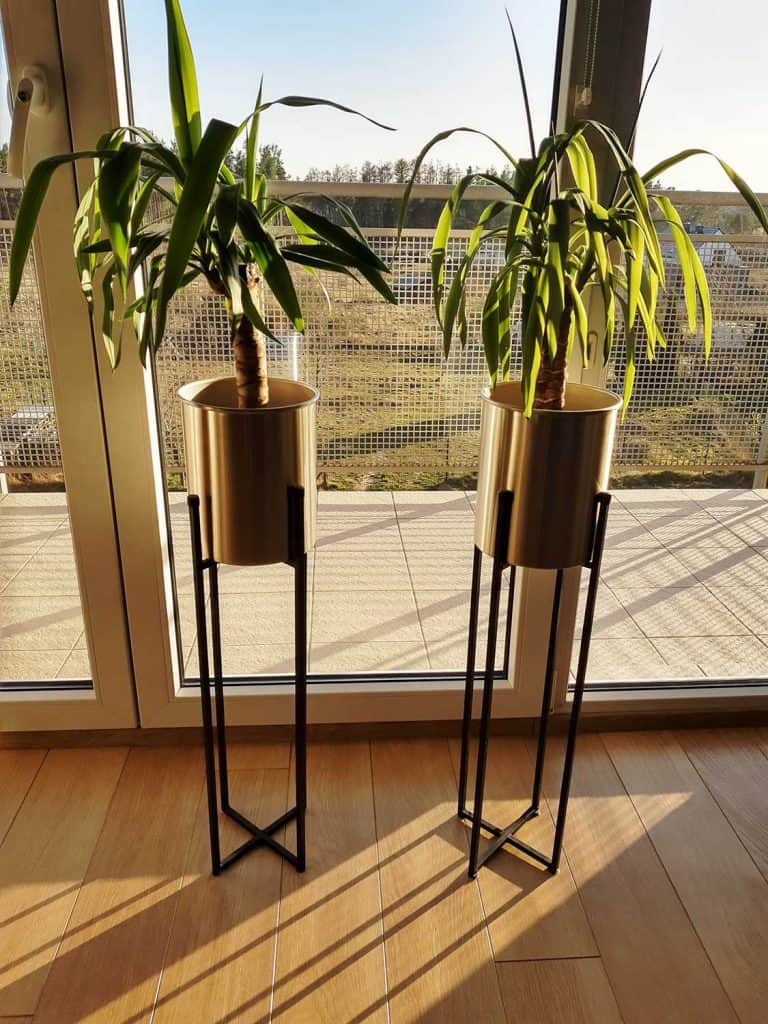
How Do You Save a Dying Yucca Plant?
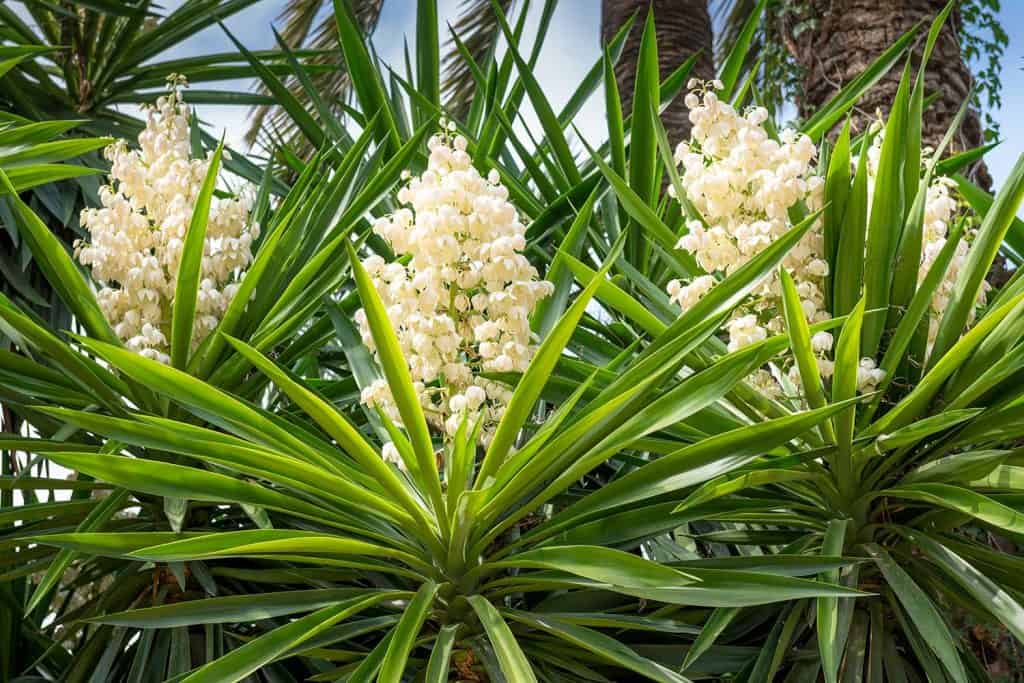
The most important step to take when you're trying to save a dying Yucca plant is to determine what's causing it to die. Because a lot of the signs of a dying plant can have two or more causes, you'll need to carefully evaluate your plant to determine what needs to be corrected.
Think about when you started noticing a problem with your plant. Was it recently moved? Have conditions in your house changed? Is it warmer or cooler than it used to be? Yuccas can tolerate a pretty wide range of temperatures, but they like warm, dry air.
Click here to check out watering cans on Amazon.
If nothing has recently changed with your yucca, you need to evaluate if it's getting enough, but not too much, light and water. An area that receives eight hours of sunlight daily during the summer may only be getting five hours during the winter. You may have to move your yucca to get the best light depending on the season.
As far as water, you may not think you're overwatering your yucca, but if you're going by a schedule rather than checking to make sure the soil is dry, you may be. You may also be overwatering it by having it in too big of a pot. Removing your yucca from its pot and checking the condition of its roots can help you evaluate water issues.
In Closing
Yuccas need a specific environment to thrive, but once you're familiar with its needs, they aren't hard to care for. Providing the right conditions for your Yucca will repay you with a beautiful plant for years to come.
Here are some more posts about Yucca plants you may enjoy:




